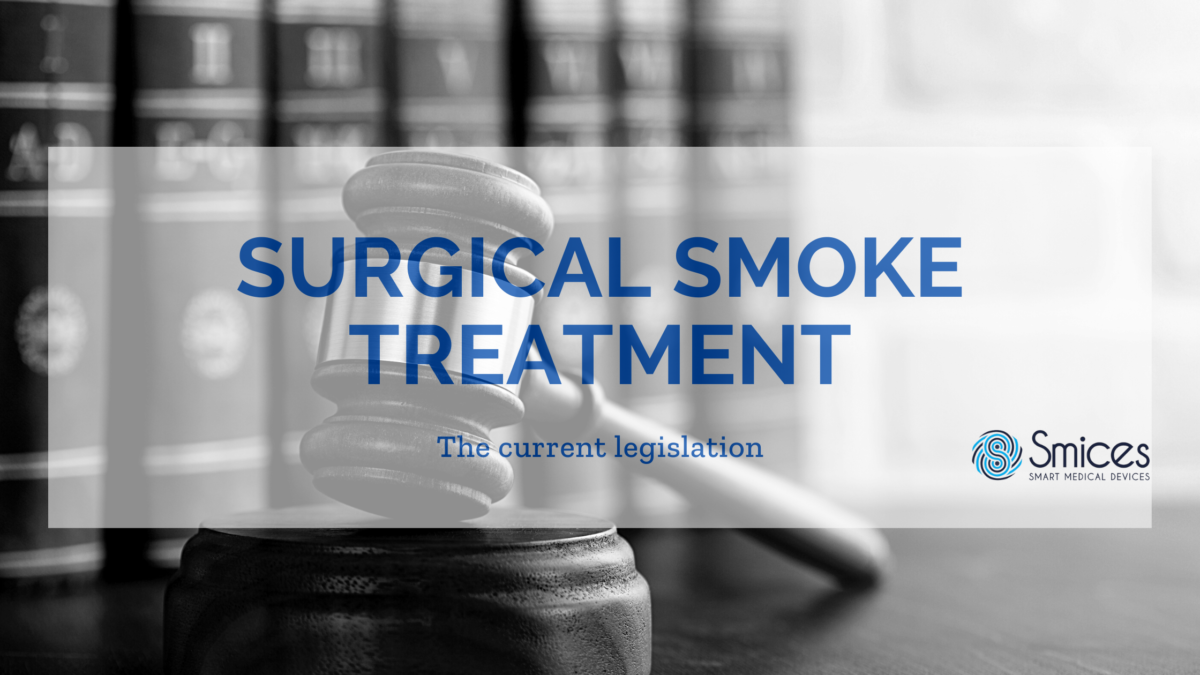Surgical smoke is harmful to the healthcare professionals who inhale them. Therefore, it is important for the public authorities and the governments to protect them by establishing laws and regulations to limit the spread of these fumes within their work environment.
The primary purpose of this article is not to list all the current laws and recommendations in every country in the world, but to briefly state the main regulations and standards that may exist.
1. In France
Currently, there is no specific legislation on the filtration and the evacuation of surgical fumes in France. However, some obligations are stated in the French Labour Code, introduced by the decree N°2008-244 of March 7, 2008.
Indeed, Article R4222-1 of the code states:
“In closed premises where workers are required to work, the air has to be renewed in such a way as to
1° Maintain the purity of the atmosphere so as to protect the health of workers;
2° Avoid exaggerated temperature rises, unpleasant smells and condensation.”
Furthermore, as stated in Article R4222-12 of the same code:
“emissions in the form of gases, aerosols, particles […] that are uncomfortable or harmful to workers’ health must be eliminated […] when production techniques allow it.
Otherwise, they must be captured as they are produced, as close as possible to their source of emission and as effectively as possible […]”.
Although the expression “surgical fumes” is not explicitly mentioned in this decree, those are made up of various toxic substances and biological constituents and are harmful to those who inhale them.
2. In the United Kingdom
In the United Kingdom, the Medicines and healthcare products regulatory agency (MHRA) recommends the use of smoke evacuation systems near the source of emission, especially during laser surgery. It also points out that equipment such as surgical masks do not provide sufficient protection for operating room staff.
3. In Germany
Since 2014, Germany applies a technical regulation called TRGS 525, 8.1 published by the Ministry of Labour and Social Affairs. Among other things, it states that surgical fumes should be evacuated in hospitals. The regulation also states that :
- If surgical fume filtration is inadequate, smoke collection system such as a mobile fume filtration system, must be used.
- Devices and instruments that generate harmful fumes should only be used in operating rooms if they comply with standards and are equipped with ventilation system.
- The evacuation of filtered air may only be allowed if the filtering device has a high-efficiency particulate air filter (HEPA) and an activated carbon filter.
- Personal Protective Equipment (PPE) such as FFP2 safety masks should be used when the environment and the ventilations systems are not efficient enough.
4. In The United States of America
In the United States, four states have enacted state-specific law on surgical fume treatment and disposal: Oregon, Colorado, Rhode Island, and Kentucky.
In these states, it is now mandatory for health care facilities to equip and use an evacuation system during procedures that generate surgical smoke. The purpose of these laws is to protect health care workers by limiting their inhalation of harmful substances. Other bills are being read in several other states, such as Illinois and New Jersey.
In addition, the federal government’s Occupational Safety and Health Administration (OSHA), has set standards and regulations for occupational safety and health. OSHA estimates that approximately half a million American healthcare workers are exposed to surgical fumes and biological aerosols each year.
OSHA then recommends:
- The use of a smoke evacuation system in order to reduce health risks to medical personnel and patients;
- The use of PPE during hazardous interventions;
- Regular maintenance of devices for better efficiency.
5. In Canada
The Canadian Standards Association (CSA) has developed one of the most comprehensive standards for surgical fume filtration and evacuation. Published in 2009 and amended in 2013, the Z305.13-13 standard Plume Scavenging in Surgical, Diagnostic, Therapeutic, and Aesthetic Settings provides guidance on the installation, use, and maintenance of surgical fume treatment devices. It also requires that any health care facility in Canada where fumes are generated during surgical procedures must provide information on the harmfulness and health risks of the fumes.
Based on this standard, the Operating Room Nurses Association of Canada (ORNAC) recommends the use of a high-filtering venting system for any procedure that generates noxious fumes.
In addition to these legislations, societies, and associations, such as the SF2H in France or the AORN in the United States, often warn about the dangers and the harmfulness of surgical fumes. They issue recommendations in order to protect healthcare workers, but these are not repressive.
Find out more by reading our article about the dangers of surgical fumes.
